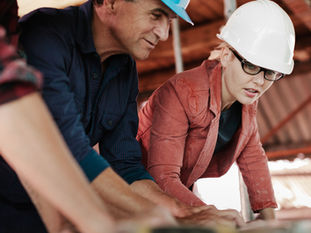
Navigating the Challenges of Drainage Line Construction in South Florida: Insights from the Field
Dec 11, 2024
3 min read
6
19
0
When it comes to infrastructure development in South Florida, one of the most critical and complex projects is the construction of drainage lines. As a civil engineer working in this region, I’ve witnessed firsthand the unique challenges and opportunities that come with ensuring effective stormwater management in an area known for its heavy rainfall, flat terrain, and proximity to the ocean.
The Importance of Drainage in South Florida
South Florida’s subtropical climate is characterized by frequent downpours, especially during the rainy season. Without proper drainage systems, urban areas are prone to flooding, which can damage properties, disrupt transportation, and negatively impact the environment. Effective drainage infrastructure is essential not only for mitigating flood risks but also for supporting sustainable urban growth.
Challenges in Building Drainage Lines
High Water Table South Florida’s water table is naturally high, often just a few feet below the surface. This poses significant challenges during excavation and installation of drainage pipes. Dewatering is a crucial step, but it can be both time-consuming and costly.
Permitting and Environmental Regulations With much of South Florida’s land classified as wetlands or near ecologically sensitive areas, obtaining the necessary permits is a meticulous process. Regulatory agencies ensure that construction does not disrupt natural water flows or harm local ecosystems.
Soil Conditions The soil in South Florida is primarily composed of sand and limestone. While sandy soil is easier to excavate, its permeability can complicate dewatering efforts. Limestone, on the other hand, often requires specialized equipment for trenching and pipe placement.
Hurricane Resilience Any drainage infrastructure must be designed to withstand the intense rainfall and storm surges brought by hurricanes. This requires careful planning and the use of robust materials.
Lessons Learned from the Field
Over the years, I’ve learned that successful drainage projects in South Florida depend on a combination of technical expertise, careful planning, and collaboration with stakeholders. Here are some of the key takeaways:
Invest in Advanced Surveying and Design Tools Using GIS and other advanced tools allows for accurate mapping of the terrain and water flow patterns. These insights are invaluable for designing systems that align with natural drainage pathways.
Engage with Regulatory Agencies Early Building relationships with agencies such as the South Florida Water Management District (SFWMD) can streamline the permitting process. Early engagement ensures that potential environmental concerns are addressed proactively.
Adopt Innovative Construction Techniques Methods like horizontal directional drilling (HDD) can be used to minimize surface disruption, especially in urban areas. Additionally, modern materials like high-density polyethylene (HDPE) pipes are increasingly popular due to their durability and ease of installation.
Prepare for Contingencies Unexpected challenges, such as encountering uncharted utilities or unusually high groundwater levels, are common. Flexibility in project planning and a well-prepared team can make a significant difference.
The Future of Drainage in South Florida
As South Florida continues to urbanize, the demand for efficient and sustainable drainage solutions will grow. Innovations such as smart drainage systems, which incorporate sensors and real-time monitoring, are likely to play a key role in future projects. Additionally, integrating green infrastructure—such as bioswales and permeable pavements—can complement traditional drainage systems while enhancing environmental benefits.
Final Thoughts
Constructing drainage lines in South Florida is no small feat, but it is a rewarding challenge for those of us in the field. By leveraging modern technologies, adhering to stringent environmental standards, and continuously learning from each project, we can build infrastructure that not only serves today’s needs but also prepares our communities for a resilient future.
Have you faced similar challenges in drainage projects? Share your thoughts and experiences in the comments below!






